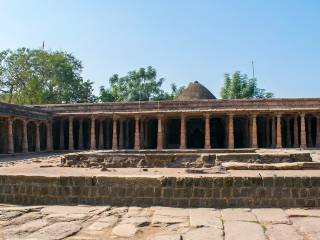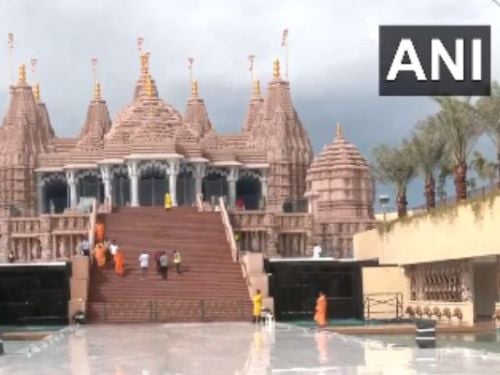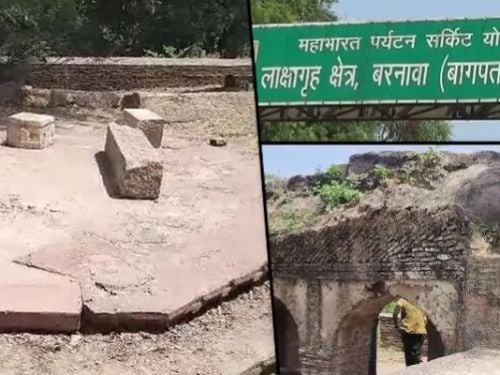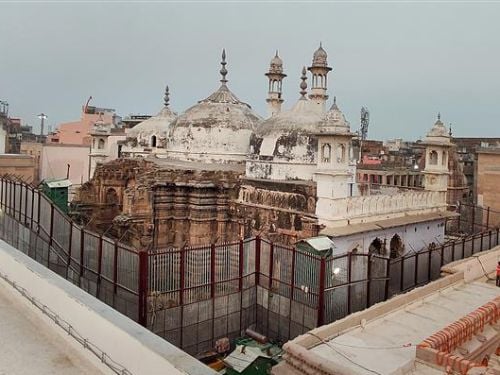Paush Krushna Navami, Kaliyug Varsha 5111
…भारतीय संस्कृति का प्रसाद मकर संक्रांति !
In Hinduism, religious festivals are associated with rituals and traditions typical to the region and prevailing season. So we find that Makar Sankranti festival is celebrated in different regions in various ways, from a day long festivity to a three-long festival. However, what is common is the traditional cuisine that is chiefly Gud’ or jaggery and til’ or sesame seeds that aim to lend warmth in the cold of winter. This is merely another revelation of how Hinduism is anchored in scientific and pragmatic practices.
UTTAR PRADESH
Makar Sankranti is called Khichdi’ in this Hindi speaking region. Taking a dip in one of the holy rivers is considered auspicious. On this day, the one-month long Magh mela commences at Prayag.
HARYANA, HIMACHAL PRADESH AND PUNJAB
Celebrated as Lohri’ in these States, the festival commences on the day before, i.e. the last day of Paush month. Bonfires are lit to celebrate the harvest of winter crops. A prayer is offered to Agni, the God of Fire, and Prasad distributed. The Prasad consists of gud’, til’. moongphali’ or peanuts, gajak’ and phuliya’ or popcorn. This ritual is by way of thanking the Sun God and seeking His protection.
Lohri’ songs and dances are a part of the festivities. Traditional cuisine is makki ki roti’ or corn bread and sarson ka saag’ or a preparation of mustard leaves, both of which are ideal food for a winter night celebration.
BIHAR and BENGAL
In these regions, Makar Sankranti is celebrated with a dip in the holy rivers and some typical rituals.
In Bengal, it is marked by a dip in the river Ganga, and attending the Ganga Sagar Mela held at the mouth of the holy river Ganges at Ganga Sagar islands. This is an annual pilgrimage for those seeking moksh’ and purification from all sins. The traditional Sankranti cuisine is "Peethey", a roll made of rice flour stuffed with jaggery sweetened coconut shavings.
ORISSA
In Orissa bonfires are lit and rituals similar to Lohri’, as in paying homage to the Agni and Sun Gods, and distribution of traditional Sankranti pitha’ or jaggery rice cakes typify the celebrations.
ASSAM
Sankranti is celebrated as the festival of Bhogali Bihu’ in this north-eastern State of Assam. It commences on the day before, on the last day of Paush month, as primarily a harvest festival when a meji’ or bonfire is built. Community cooking, feasting, singing and dancing to the beat of dhols’ or drums typify the male-centric Bhogali Bihu’ celebrations. Betel nuts and the traditional Sankranti cuisnine of pitha’ is thrown into the fire as homage paid to the Agni God. The following day is marked with various rituals to seek favourable cropping and traditional sports like the buffalo fight, cock fight and the egg-fight. The pithas’ or rice cakes symbolising the Bhogali Bihu’ festival are the Til Pitha’ with a stuffing of sesame seeds and jaggery-sweetened ground coconut, and the Ghila Pitha’ with jaggery.
TAMIL NADU
Perhaps the most important festival of the Tamils, Sankranti is celebrated with great pomp and devotion as a harvest festival, called Pongal’. It is a four-day festival, beginning on the last day of the Tamil month Margazhi’, as Bhogi’. The old clothes and articles are thrown away or burnt in a bonfire, marking the end of the old solar calendar and the emergence of the new-year. The main day of Sankranti is called Pongal’, when rice is boiled with milk and jaggery in a new pot and allowed to boil over, as a good omen. With the blowing of conch and offering of this pongal rice to the Gods, the new-year and prosperity is ushered in. The third day of Maattu Pongal’ honours the cattle used in daily lives. This is a tradition adopted from earlier pastoral life, so has lost much of its significance today in an urban milieu. The festival culminates with Kaanum Pongal’, when kolam’ or rangoli threshold designs are drawn and respect paid to elders, relatives and friends.
ANDHRA PRADESH
Sankranti is a four-day festival beginning on the eve as Bhogi’. Bonfire is lit and old articles are burnt, signifying that the old and clutter has to be discarded to make place for the new. The day of Sankranti is called Pedda Padunga’ or Surya Sankranti’, when new clothes are worn and traditional sweets offered to the Gods. The third day is Kanuma’ and the festival culminates with Mukkanuma’ when the utensils and equipment used in the household are given a thorough cleaning. Giant rangolis are drawn in front of the houses, at night.
KARNATAKA
The festival is celebrated as Sankranthi’ when offerings are made to the Gods with traditional preparations including sesame seeds and jaggery.
KERALA
The celebrations mark the culmination of the 40-day long rituals at Sabrimala with great fanfare and traditional feasting.
MAHARASHTRACelebrated as Sankranti, this marks a period of good-will with exchange of sweets called til-gud’ and til-laddus’ made of sesame seeds and jaggery. Til Polis’ form the traditional part of Sankranti cuisine. The ritual of haldi-kumkum’ is a community celebration amongst married women.
GUJARATSankranti is celebrated as Uttarayana’ with homage to the Sun God. Traditional offerings are made of tal sankadi’ and chikki’, accompanied with feasts of khichdo’. Kites are flown as a form of oblation. This has assumed significance in recent decades.
RAJASTHAN
Sankranti signifies the end of the inauspicious month of Poush, and ushering in of prosperity. Blessings of elders are sought. Traditional offerings of Ghewar’ or sweetened yellow cake, sweets of sesame seeds and jaggery, are made. After oblation, they are distributed together with alms and articles of use to the poor, as a gesture of goodwill.
MADHYA PRADESH
Sankrant is celebrated as Sakarat’ with traditional sweets typifying the festival.
In coastal regions, it is often celebrated as a harvest festival dedicated to Lord Indra.
NEPAL
Maghe Sankranti’ forms the essence of the Nepalese Hindu festival, similar to other solstice festivals. Traditionally auspicious foods like laddu’ or sweet balls, ghee’ or home-made clarified butter and sweet potatoes are distributed. The Tharu people here celebrate it as Maghi’. However the essence of the rituals is the same.
SOUTH-EAST
ASIAWith a widespread Hindu presence in the countries of South-East Asia, Sankranti celebrations have been adapted in myriad forms here as well.
World-wide, the Hindus diaspora celebrate the Sankranti festival as Lohri’, Pongal’ or by other names. However the underlying rituals are the same, with community participation in a thanksgiving gesture. Thus oblation to the Gods and feasting on winter-specific food, paying respects to the elders, ridding one-self from clutter and dirt, distribution and giving away to the needy and poor, all of these are part of Sankranti rituals followed by Hindus, including those in South-East Asia.
Source: Helium
Also See
 |
Dharma Jagruti SabhasDhama Jagruti Sabhas is creating mass awareness among Hindus about various problems affecting Hindu Dharma. |
 |
Save temples from Anti-Hindus
Temples are the centres of Hindu Dharma. Anti Hindu forces like Muslims, Congress, Christians has constantly targetted them. HJS is fighting against these forces. |

 Madhya Pradesh: ASI survey of Bhojshala complex in Dhar to start on March 22
Madhya Pradesh: ASI survey of Bhojshala complex in Dhar to start on March 22 PM Modi to inaugurate the first traditional Hindu Mandir in Abu Dhabi
PM Modi to inaugurate the first traditional Hindu Mandir in Abu Dhabi Tirupati Devasthanams to establish platform for non-Hindus to adopt Sanatan Dharma
Tirupati Devasthanams to establish platform for non-Hindus to adopt Sanatan Dharma Baghpat court gives ownership rights of Mahabharata era Lakshagriha to Hindu side
Baghpat court gives ownership rights of Mahabharata era Lakshagriha to Hindu side Misleading claims about Brahmins removed in rationalised NCERT textbooks
Misleading claims about Brahmins removed in rationalised NCERT textbooks Big victory to Hindus as court allows puja in Vyas Ji Ka Tehkhana at Gyanvapi complex
Big victory to Hindus as court allows puja in Vyas Ji Ka Tehkhana at Gyanvapi complex